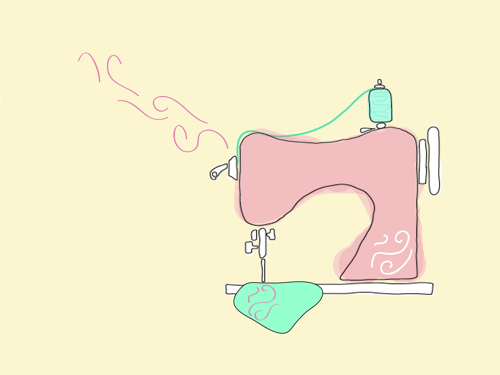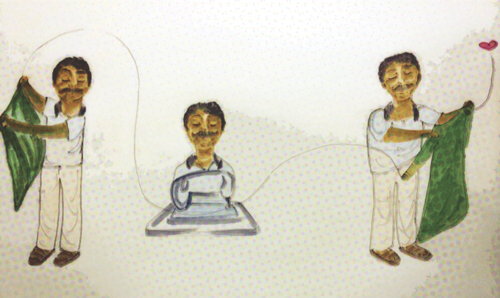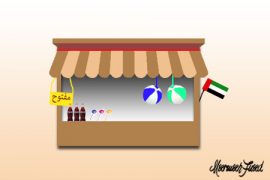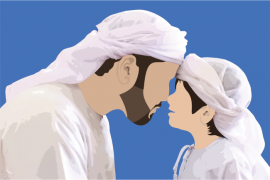Article in brief: This article visits a small tailoring shop and enters its back-room to reveal the process of the tailor and what he tailors.

A web of service shops intertwine with one another in a small local neighborhood; a grocery store is lined up next to a stationary store, a photography studio, a car service workshop, a cafeteria, a phone shop, and a tailor, who like everyone else working in these stores is summoned to address the needs of his customers upon hearing the car honk.
Such is the case of Babu; one of the master tailors working in Al Sanabil Tailors in Ajman. Babu and his peers Ali and Liton have come from India to the United Arab Emirates in 1986 to try their hand at the traditional embroidery business. Twenty eight years later, the shop’s modesty is kept and retained by the same level of modesty of the most requested item favored by the customers: the embroidered jalabiya, otherwise known as Mekhawarah.
The traditional dress worn by Emirati females has been an inseparable fabric of Emirati customs long before the union of the seven emirates. With styles and tastes in fashion ever changing, due to the globalization poured and centered in the UAE along with most countries in the world, the traditional jalabiya remains a resilient and relevant item. Girls revisit its style often during Friday family gatherings and the holy month of Ramadan. This pleases Babu as he prefers to stitch up a jalabiya rather than any other style of clothing.
Seven sewing machines chatter ferociously in the backroom of Babu’s shop while the capable hands of the tailors working there tame them and marry the thread with the textile under the hasty poking of the needles. Their hands guide the fabric where it’s meant to be marked and where it’s supposed to be sealed up. The machines in this case are powerless and are brought to a roar and a silent halt at the whim of the experts controlling them. Aside from the use of machinery, the tailors utilize their eyes and hands as experienced and reliable tools of creation.

The story of how the tailor extracts the vision of what we desire to wear and transforms it into a tangible reality is one often neglected in a time where ready to wear clothing is conveniently abundant. For the customer, the process starts with choosing a style, textiles and colors then handing them over to the tailor, then the process pauses then picks back up and ends after receiving the stitched up and customized product. But for the tailor, the story has a longer train of events. The garment placed on the table is dissected and ready for customization according to the sizes and cuts preferred and ordered. Pleats pinched and folded around the waistline of a skirt, needles swiftly penetrating the thin and fragile face of the garment to embroider thread and beads on its surface, lace appliqués embellished on abayas, talli coiling up the cuffs of a jalabiya, all this and more is assembled in the neighborhood tailor’s daily to-do list.




1 Comment